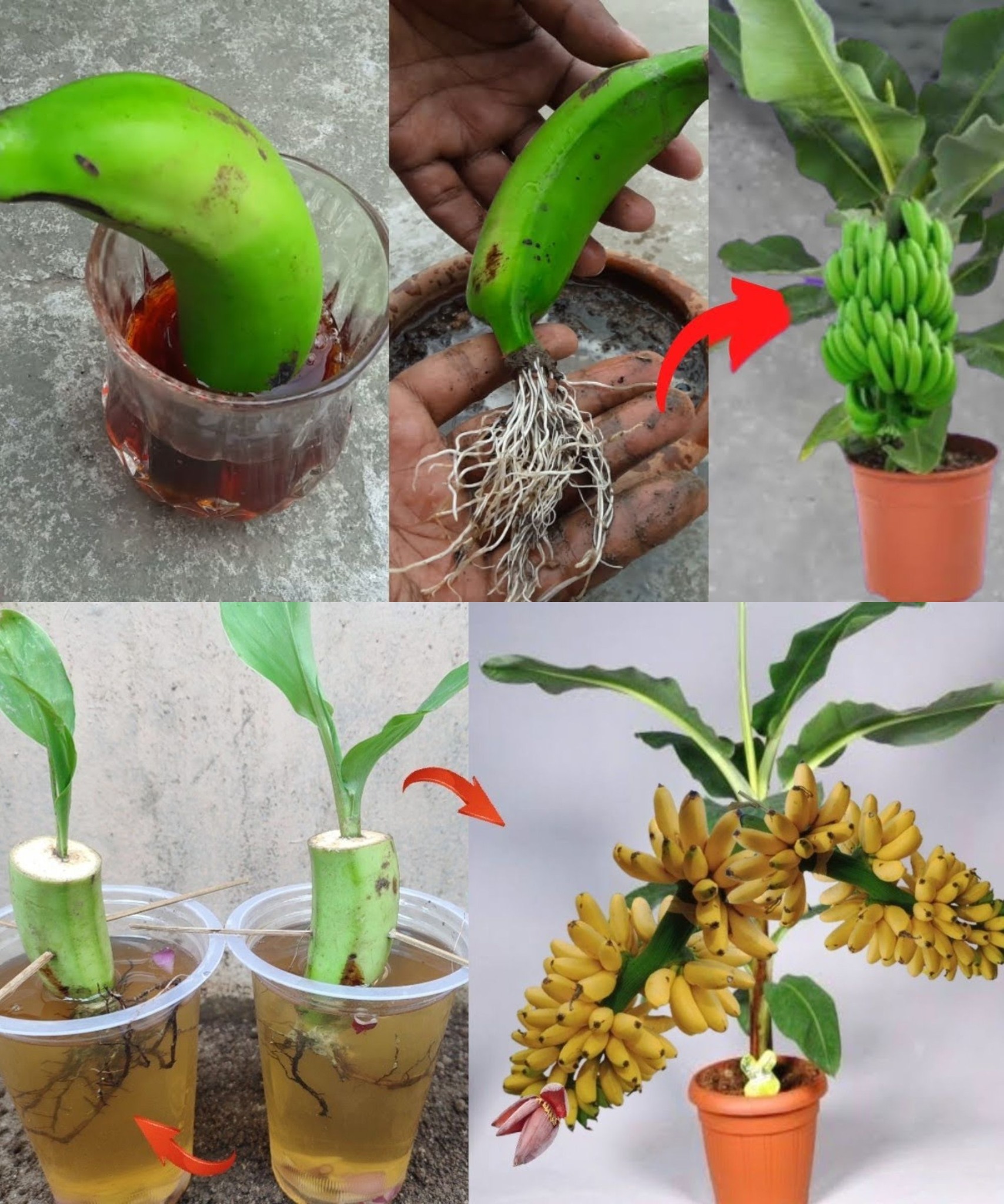
Here’s how you can grow a banana plant using pups:
Growing Banana Plants from Pups:
1. Find a Banana Pup
- Obtain a pup from an existing banana plant. Pups are the small shoots or suckers that grow from the base of a banana plant.
2. Separate the Pup
- Carefully dig around the base of the pup to find where it attaches to the mother plant.
- Use a sharp, clean shovel or knife to separate the pup from the main plant. Make sure the pup has some roots attached.
3. Prepare the Pup
- Trim any long roots to about 3-4 inches to encourage new root growth.
- Remove any dead or damaged leaves.
4. Plant the Pup
- Choose a sunny location with well-draining soil. Bananas prefer a slightly acidic to neutral soil pH (5.5 to 7.0).
- Dig a hole twice as wide and deep as the roots of the pup.
- Place the pup in the hole and backfill with soil, making sure the base of the pup is level with the soil surface.
- Water the pup thoroughly after planting.
5. Care for Your Banana Plant
- Water regularly to keep the soil moist but not waterlogged.
- Apply a balanced fertilizer regularly during the growing season.
- Protect the plant from strong winds, which can damage the leaves.
- Mulch around the base to retain moisture and suppress weeds.
6. Wait for Growth
- It can take several months to a year for a pup to establish itself and begin growing vigorously.
- Banana plants typically produce fruit within 1-2 years, depending on the variety and growing conditions.
Growing Banana Plants from Seeds (if available):
1. Obtain Banana Seeds
- Purchase seeds from a reputable nursery or seed supplier. Look for varieties that are meant to be grown from seed.
2. Prepare the Seeds
- Soak the seeds in warm water for 24 to 48 hours to soften the seed coat.
3. Sow the Seeds
- Fill a pot with a well-draining seed starting mix.
- Sow the seeds on the surface and cover them with a thin layer of soil.
- Water gently and keep the soil consistently moist.
4. Provide Warmth and Light
- Place the pot in a warm area and provide plenty of light. A temperature between 60°F and 95°F (15°C to 35°C) is ideal.
- Consider using a heat mat to maintain a consistent temperature.
5. Transplant Seedlings
- Once the seedlings have grown a few inches tall and have developed several leaves, they can be transplanted into individual pots or outdoors if the climate is suitable.
Banana plants are tropical and require warm temperatures, so if you live in a cooler climate, you may need to grow them in a greenhouse or indoors during the colder months. Remember that patience is key when growing bananas, as they take time to mature and produce fruit.
